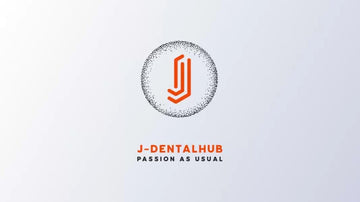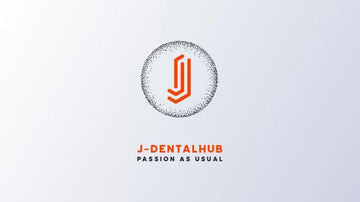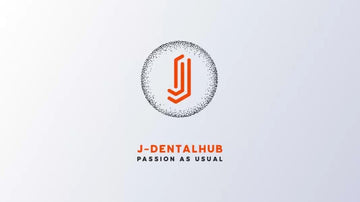Are TADs Really Just Screws? A Comprehensive Look at Mini-Screws in Orthodontics
Introduction
Temporary Anchorage Devices (TADs) have revolutionized modern orthodontics, offering a reliable and efficient method of anchorage control. Often referred to simply as "screws", TADs provide bone-supported stability that allows for precise movements of teeth without depending on patient compliance. But are TADs really just screws, as suggested by Vincent Kokich in his well-regarded article "It’s Only a Screw"? This article explores that question by examining the purpose, strengths, limitations and clinical application of TADs in orthodontics.
1. Why TADs Are Considered "Just Screws"
The Origins of the Phrase
The phrase "TADs are just screws" was popularized by Vincent Kokich, a renowned figure in the field of orthodontics. His intention was to demystify TADs and emphasize that, at their core, these devices are mechanical tools meant to serve a specific anchorage purpose. While TADs have evolved in terms of design, material and application, their fundamental role remains simple: to provide stable anchorage points in the bone. This simplicity has enabled orthodontists to move away from cumbersome extraoral appliances, headgear and other restrictive mechanisms.
Bjorn Ludwig, another respected expert, echoed Kokich's sentiments by highlighting that while TADs may seem sophisticated, they fundamentally remain "just screws" until the clinician has a clear understanding of how and why to use them. According to Ludwig, the success of TADs in orthodontics depends not on their complexity, but on the accuracy of diagnosis and treatment planning.
TADs: A Biomechanical Tool
The simplicity of TADs is also their strength. They can be applied to a variety of clinical scenarios, from correcting open bites to aiding in space closure. However, the clinician must first diagnose the patient's condition accurately to establish the "why." Once the purpose is defined, TADs become an indispensable part of the treatment strategy, providing a stable platform for achieving predictable results.
Source:
- Vincent Kokich's Approach to TADs
- Bjorn Ludwig’s Perspective on Mini-Screws
2. The Importance of Diagnosis: Defining the “Why”
Step 1: Diagnose Before Screwing
Diagnosis is the cornerstone of successful orthodontic treatment, particularly when using TADs. Without an accurate diagnosis, even the best TADs will fail to produce the desired outcome. A thorough examination, including clinical assessments, radiographs and possibly 3D imaging, helps identify the root cause of malocclusions and determines the specific movements required for correction. Only after a comprehensive diagnosis can orthodontists set clear, achievable goals for treatment.
Step 2: Setting Goals
Once the diagnosis is complete, the next step is setting the goals. These goals answer the question: "What do we want to achieve with this treatment?" Setting precise goals is essential because it provides a framework for choosing the right TAD, determining its placement and selecting the biomechanics needed to achieve the desired results. Goals should be set based on diagnostic findings and consider the patient's age, bone quality and overall treatment plan.
Step 3: Choosing the Biomechanics
Finally, the chosen biomechanics - the application of force and movement - dictate the type of TAD used and how it is employed. Biomechanics must be carefully planned to minimize unwanted side effects, such as tipping or unintended tooth movements, while maximizing efficiency. By following a step-by-step approach - diagnosis, goal setting and biomechanics - clinicians ensure that TADs are used effectively, with minimal complications.
Source:
3. The Purpose of TADs: Why We Use Them
Efficient Bone-Supported Anchorage
One of the primary reasons for using TADs is their ability to provide stable, bone-supported anchorage without relying on the patient’s cooperation. Traditional methods like headgear depend heavily on patient compliance, making treatment outcomes unpredictable. TADs eliminate this variability by anchoring directly to the bone, allowing orthodontists to apply precise forces for effective tooth movement.
- Reduced Treatment Time:By providing reliable anchorage, TADs allow orthodontists to achieve faster results with fewer visits. The ability to perform complex movements without extraoral appliances can significantly reduce treatment duration.
- Minimized Side Effects:TADs are designed to target specific movements while minimizing unwanted side effects. Proper planning ensures that forces are applied accurately, reducing the need for corrective adjustments later in treatment.
Examples of Clinical Applications
TADs have been used effectively in a wide range of orthodontic treatments:
- Molar Intrusion:Correcting open bites by intruding molars without affecting other teeth.
- Anterior Retraction:Closing spaces in extraction cases by retracting anterior teeth without the need for headgear.
- Midline Correction:Shifting midlines and performing asymmetrical corrections without causing side effects on the opposite side.
These examples illustrate how TADs can be adapted to various clinical needs, providing reliable anchorage and facilitating predictable outcomes.
Source:
- Clinical Applications of TADs
4. SWOT Analysis of TADs in Orthodontics
A SWOT analysis provides a structured way to evaluate the strengths, weaknesses, opportunities and threats associated with TADs. This analytical tool, commonly used in business strategy, can be effectively applied to the evaluation of TADs in orthodontics.
Strengths
- Reliable Anchorage:TADs offer a stable anchor point that does not depend on patient cooperation. This makes treatment outcomes more predictable and reduces the risk of compliance-related failures.
- Ease of Placement and Removal:TADs are relatively simple to place and can be removed without invasive surgery. This makes them a convenient choice for orthodontists seeking reliable yet temporary solutions.
- Minimal Secondary Effects:When used correctly, TADs minimize unintended side effects, such as tipping or unwanted movement of adjacent teeth. This contributes to a more streamlined treatment process.
Weaknesses
- Operator Sensitivity:The success of TADs is heavily dependent on the clinician’s expertise. Inexperienced practitioners may struggle with proper placement, leading to increased risk of failure.
- Bone Quality Requirements:TADs require good bone quality for stability. Poor bone density, common in older adults, can increase the risk of loosening or failure.
- Risk of Complications:While rare, complications such as infection, root resorption or sinus penetration can occur. Proper placement and careful monitoring are crucial to minimize these risks.
Opportunities
- Reduced Need for Surgery:TADs can often eliminate the need for more invasive surgical interventions, such as orthognathic surgery, by providing alternative anchorage solutions.
- Applicability in Segmental Orthodontics:TADs are highly versatile and can be used effectively in segmental orthodontics, particularly for molar intrusion, midline correction and tooth retraction.
- Expansion of Pre-Prosthetic Cases:TADs provide valuable support in pre-prosthetic cases, allowing orthodontists to create the ideal space for implants, crowns or bridges with precision.
Threats
- Risk of Device Failure:TADs can fail if they become loose, break or are improperly placed. This requires careful monitoring and potential replacement, increasing treatment costs and time.
- Patient Discomfort:Although generally well-tolerated, TAD placement can cause discomfort or anxiety in some patients, particularly those with low pain tolerance.
- Technological Advances:Rapid advancements in orthodontic technology may result in new devices that outperform traditional TADs, potentially rendering them obsolete in the future.
Source:
- SWOT Analysis of Orthodontic TADs
5. Practical Considerations When Using TADs
Placement and Stability
Ensuring proper placement of TADs is key to their success. Advanced imaging techniques, such as cone-beam computed tomography (CBCT), are invaluable in identifying the optimal insertion site. CBCT provides detailed images of bone density, root proximity and anatomical structures, guiding the clinician to precise placement and minimizing risks.
Key Placement Tips:
- Avoid Root Contact:Always ensure adequate clearance between the TAD and adjacent tooth roots to prevent damage.
- Consider Bone Quality:Select sites with D2 or D3 bone to maximize primary stability.
- Monitor for Mobility:Check for mobility post-insertion, as any movement can indicate inadequate stability.
Biomechanical Planning
Biomechanics play a crucial role in determining the force vectors applied through TADs. Using a combination of elastomeric chains, power arms, and NiTi springs, orthodontists can apply targeted forces to achieve the desired tooth movements while minimizing adverse effects. Proper planning requires a thorough understanding of how forces will interact with the patient’s anatomy and existing appliances.
Patient Management and Communication
Effective communication with patients is essential when using TADs. Educating patients about the purpose, benefits and potential discomfort associated with TADs helps set realistic expectations and enhances cooperation. Addressing any concerns, such as anxiety or pain, can improve the overall patient experience and increase acceptance of the treatment plan.
Source:
- Cone-Beam Computed Tomography in Orthodontics
- Biomechanics in TAD Applications
Conclusion
TADs may seem like simple screws, but their impact on orthodontic practice is profound. By providing reliable anchorage, reducing treatment time and minimizing side effects, TADs have become an indispensable tool in modern orthodontics. However, the key to successful outcomes lies in accurate diagnosis, thoughtful treatment planning and meticulous execution.
As Vincent Kokich and Bjorn Ludwig have emphasized, TADs are not complex devices, they are simple tools that, when used correctly, can achieve complex results. Orthodontists must continue to refine their skills, remain updated on technological advances and apply evidence-based practices to ensure the best outcomes for their patients.
References:
- Vincent Kokich's Approach to TADs
- Bjorn Ludwig’s Perspective on Mini-Screws
- Diagnosis in Orthodontics
- Clinical Applications of TADs
- Cone-Beam Computed Tomography in Orthodontics












 0745 100 497
0745 100 497


